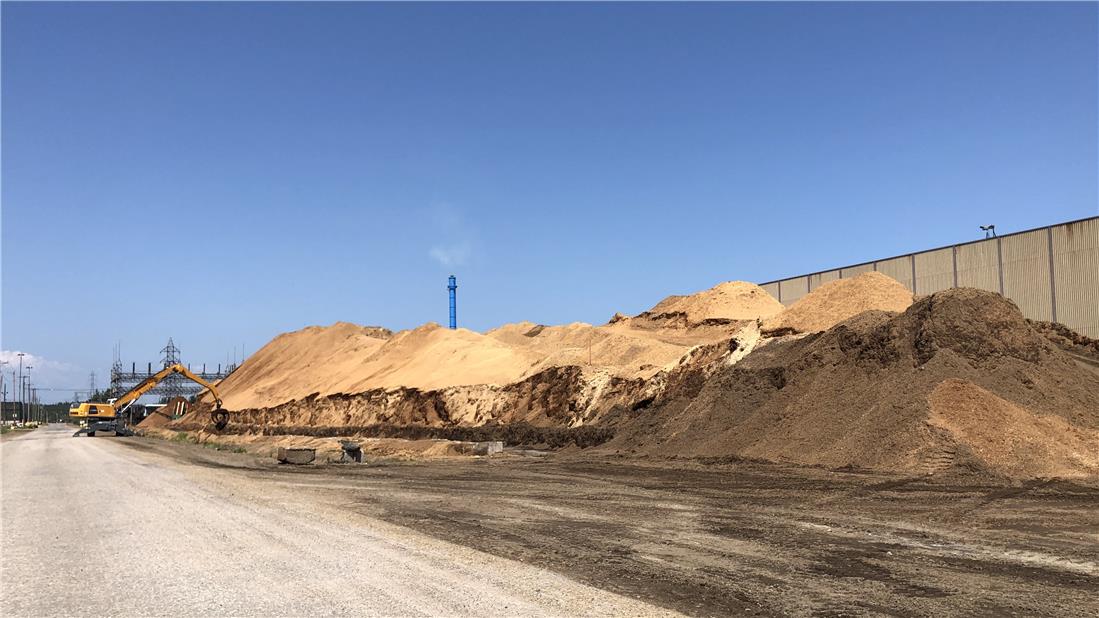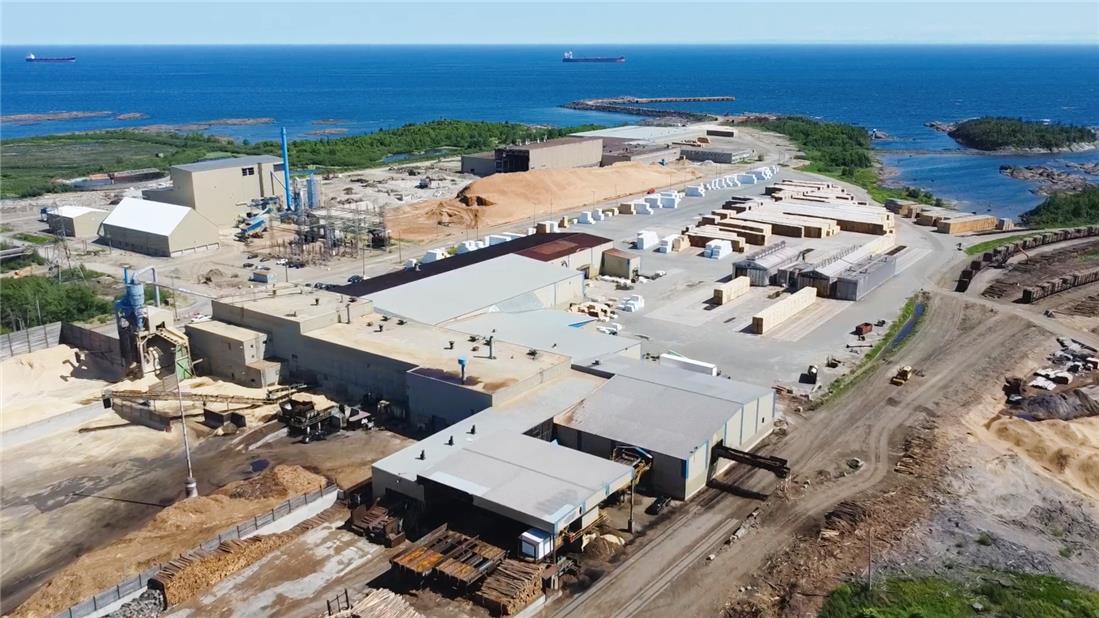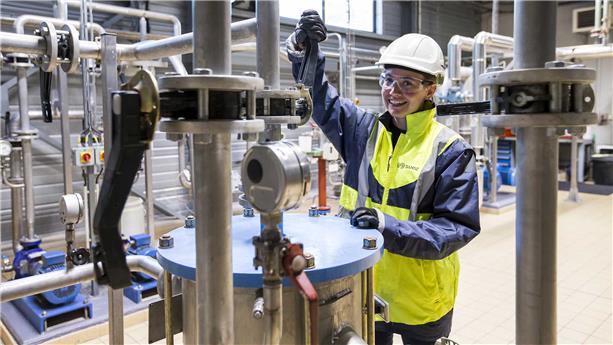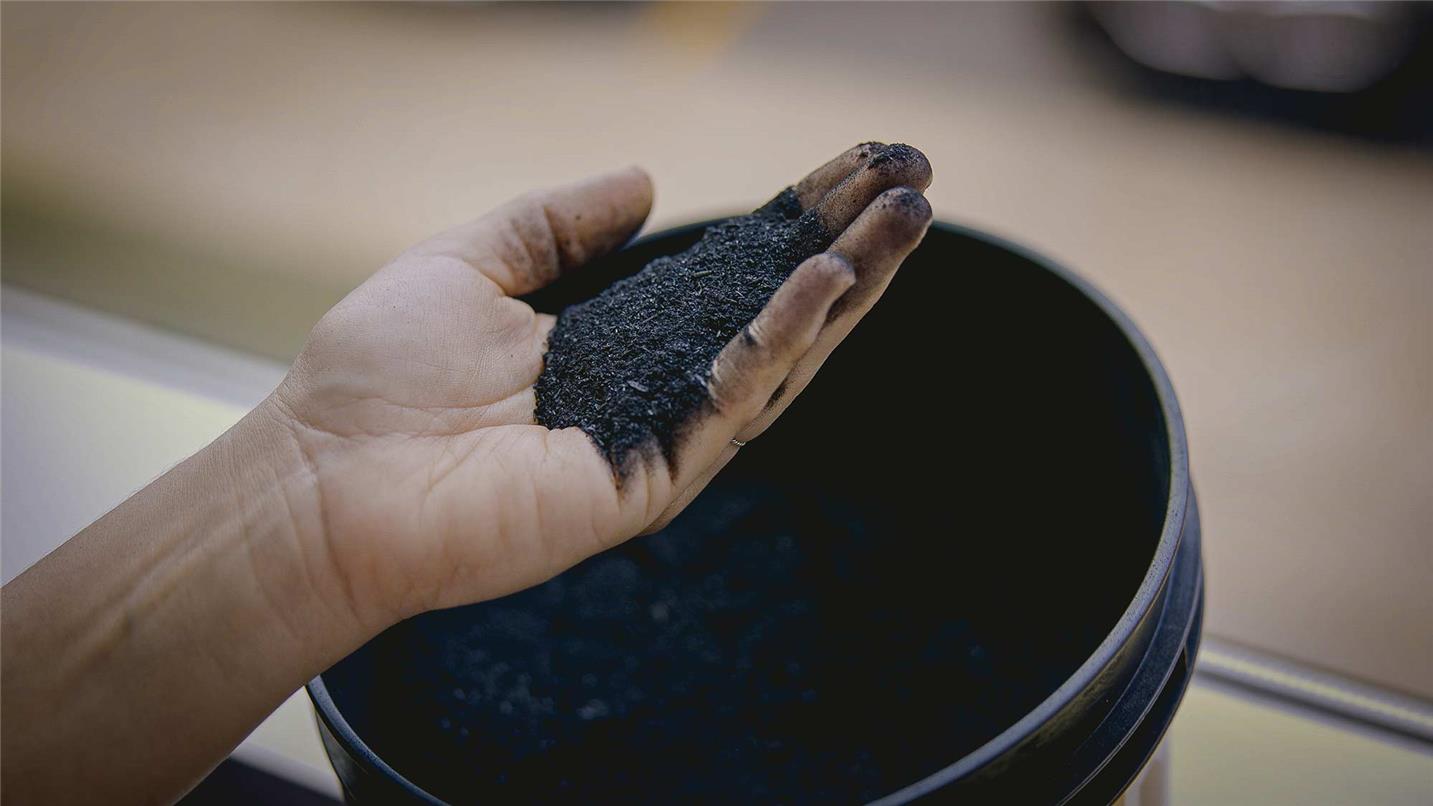
- Value residual biomass and organic waste
- Sequester carbon durably, for example in soils
- Produce a high value material and generate bioenergy
Form is loading.
If the form does not load after a few seconds, please reload the page (CTRL + F5 or (or Cmd + Shift + R on Mac).
Value residual biomass and organic waste
Forestry and agricultural activities generate worldwide billions of tonnes of poorly valued biomass and organic waste. When burned in sawmill yards or in fields after harvest, it causes toxic fumes, health and environmental damage and emits CO2.
We offer to give value to this residual biomass by turning it into biochar.
- In the field of climate solutions, biochar stands as a smart combination of nature-based solutions and technology-based solutions.
- It takes advantage of an already concentrated source of carbon, as dry matter of plants is 50% carbon.
- Almost all the ligneous agricultural waste (pits, shells, pod, hull, husk, bagasse, fibres, etc.) and wood residues (urban wood, scraps and waste from the wood industry, non-commercial forestry wood, chemically untreated packaging wood, etc.) can be valued.
- We are committed to exclusively using residual biomass from sustainably managed resources.

Integrate biochar in products and services and replace carbon intensive materials
Biochar is a tremendously high-value material which puts the captured carbon to use. Our industrial and highly configurable facilities can offer different types of biochars with a wide range of functionalities and properties to meet the requirements of various economic sectors.
- Special soil amendment: with large surface area, abundant micropores and surface functional groups, biochar has properties of water and fertilizer retention. Replace peat by biochar and avoid the related GHG emissions, add biochar to soil amendment to improve plants’ grow in nursery and plants' recovery in the field, add biochar to the soil to retain water and help reduce water stress.
- Urban and polluted soils: add biochar to stabilize pollutants and contribute to the soil health, spread biochar in the soil to strengthen reforestation.
- New materials: replace up to 20% of cement by biochar in concrete and avoid the related GHG emissions, integrate biochar to bio sourced materials, etc.
- Gas and liquid treatment: use (activated) biochar to treat effluents
- Animal feed and bedding: feed ruminants with biochar as a supplement and decrease the methane emissions, add biochar to the poultry beddings and limit diseases and malformation of chicken feet.
- Etc.

By transforming forest and agricultural residues into carbon sinks and soils amendments, SUEZ creates value over the entire life cycle of the material. Once it is stabilised in the biochar matrix, carbon becomes a key and unique vector of the circular economy.Yves Rannou , Chief Operating Officer Recycling & Recovery, Executive Vice-President
Take advantage of the extra bioenergy to end fossil fuel
Biochar is the result of a pyrolysis process, which consists of heating biomass in an oxygen free environment. In addition to producing biochar, pyrolysis produces a gaseous by-product called “syngas”, which contains energy.
- Part of this energy is self-consumed to supply the upfront biomass dryer and the pyrolysis, ensuring thermal energy self-sufficiency.
- The extra energy, which is continuous and renewable, can be recovered in the form of heat, steam, power, cold, and even bio-oil.
Offset hard-to-abate GHG emissions thanks to long-term carbon dioxide removal credits
For organizations that have completed their journey towards a drastic GHG emissions reduction, biochar has the best overall benefits for offsetting hard-to-abate emissions. It is a mature, economic, and safe solution to tackle climate change, compatible with human well-being and planetary boundaries.
- According to the Paris Agreement, the hard-to-abate GHG emissions’ target amounts to 10 billion tonnes of CO2eq / year in 2050.
- To achieve carbon neutrality, the same quantity of carbon must be sequestered.
- Biochar has the potential to lock down 0.3 to 6.6 billion tonnes of CO2eq / year in 2050, which makes it a scalable solution to fight against climate change.
Biochar is compatible with the preservation of biodiversity and other planetary boundaries.
By 2035, with our portfolio of plants, we aim to produce 350,000 tonnes of biochar / year which will lead to sequester 800,000 tonnes of CO2eq / year.
They trust us
We have teamed up with Airex Energy and Groupe Rémabec to build the first industrial biochar production plant in Port-Cartier, Canada.
Owned by Carbonity, a joint venture with our two partners, the plant has been producing biochar since early 2025. Its initial production capacity of 10,000 tonnes of biochar per year is set to triple in 2026, making it the largest biochar plant in North America and one of the biggest in the world. The plant uses the residual biomass of Groupe Rémabec’s sawmill operations, which would emit GHG over time if left to rot.
The project, financially supported by the Quebec and Canadian governments, will sequester 75,000 tonnes of carbon dioxide per year and create 75 local jobs when fully operational.

Frequently Asked Questions
Biochar is the result of a pyrolysis process, which consists in heating biomass in an oxygen-free environment at 550-600°C. In addition to producing a solid component (biochar), pyrolysis produces a gaseous by-product called ‘syngas’, which is a convenient source of renewable energy. Part of this energy is used to supply the upfront biomass dryer and the pyrolysis equipment, ensuring energy self-sufficiency of the process. The excess of syngas is used by local industries and by public authorities (for heating networks, swimming pools, hospitals for example), or for upgraded energy such as power and or bio-oil.
Biochar is a solid component produced from residual and waste biomass, such as agricultural biomass (crop residues and unused by-products), wood and forestry residues, and a wide spectrum of solid organic waste from food processing or secondary uses of biomass (such as rice husk, sugar cane bagasse, nutshells, fruit stones, coffee chaff and dregs…). In a nutshell, it can be assumed that any biomass waste having no commercial/technical interest to be digested or composted may be a suitable feedstock for biochar production.
Biochar is preferably produced by using local biomass sourcing and short transportation distances.
Biochar production facilities can easily be implanted near wood sawmills or agri-food plants for example, directly using wood and agri residues to produce biochar in a very short processing chain.
Yes, it is. Biochar is a persistent material which allows to durably store carbon. Throughout their lifetime and in order to grow, plants extract efficiently and usefully CO2 from the atmosphere through photosynthesis. When this biomass naturally decays or is burned, carbon is rejected to the atmosphere in the form of climate-damaging gases, such as carbon dioxide (CO2) and methane (CH4). Usefully coupled with the natural carbon cycle, pyrolysis conversion (the process of transforming this biomass into biochar) allows to durably convert higher amounts of carbon into a stable form, which would have otherwise been rejected to the atmosphere.
Depending on the Life Cycle Analysis of each plant and the input biomass composition, one ton of biochar can durably remove between 2.5 and 3 net tonnes of carbon dioxide equivalent from the atmosphere. Because biochar is highly resistant to chemical and geological degradation, the carbon storage effects of biochar are lasting irreversibly and surely for hundreds of years, which is significantly more than other carbon removal processes and applications.
No, the biochar is not at all burnt wood.
The organic matter, whether it is wood or agricultural products, contains 50% of carbon (on dry matter) that has previously been absorbed by plants through photosynthesis.
During the combustion of organic matter, carbon is rejected in the atmosphere in the form of climate-damaging gases, such as carbon dioxide (CO2).
On the contrary, the pyrolysis of organic matter concentrates the carbon inside a solid fraction, which is called biochar. In this solid fraction, the carbon is organized in very stable molecular forms, called inertinite and semi-inertinite, which will last for centuries when properly used.
No, biochar is not ash. Ash is the solid remnants of fire and contains minerals and metals.
Biochar is made of 80-90% of carbon and 10-20% of minerals, volatiles, metals, etc.
Depending on the production parameters, the biochar has a wide range of properties and can be used for diverse applications, enabling to conserve the carbon once it has been stabilized through pyrolysis. Moreover, biochar helps improve the quality and performance of widely used products and applications, making them more climate efficient in terms of GHG balance, value creative and resilient.
For a few decades, biochar has been particularly recommended for soil application where it ensures long-term carbon sequestration compared to all other organic carbon compounds which will gradually decay. It also contributes to soil health. So far, it has been mainly used in agricultural fields, where the addition of biochar helps improve water retention, microbiotic diversity and nutrient availability, lighten the soil, and, in combination with fertilisers, increase crop yield and natural plant resistance. Biochar can also be used as an additive to compost or liquid manure, improving compost quality and reducing nitrogen losses. By regenerating soils and supporting plant growth and resistance, biochar accelerates the carbon absorption of any cultivated lands in rural and urban areas, creating a true virtuous circle.
In addition, biochar has proven its qualities in other sectors. It can be used as a feed additive for ruminants, improving animal health and reducing enteric methane emission, or in urban and industrial areas to rehabilitate degraded and contaminated soils and improve the replantation of urban trees. It can generate avoided emissions by substituting impactful and/or non-sustaining materials (e.g. peat replacement by biochar) and it can also improve the direct carbon footprint (scopes 1 & 2) and sometimes specific properties of construction materials such as concrete, asphalt or gypsum. Finally, it can also be useful in water treatment to reduce pollution of ground and surface water.
The pyrolysis of organic matter organizes the carbon in very stable molecular forms, called inertinite and semi-inertinite. These molecules are part of the natural organic carbon cycle and thus do exist in the soil and sub soil. These carbon fractions are well-known to the scientific community.
Recent research has shown that the inertinite content of biochars can overpass 95% (dry ash-free basis) which indicates superior carbon permanence and resistance to microbial degradation. When used in a conservative way, for instance in a soil or in building materials, these biochars last for centuries, even millennia.
Biochar and compost do not have the same properties in a soil. Using both products is useful to enhance soil health and crop yields.
In a nutshell, the compost provides soils with nutrients and degradable carbon, whereas the sponge properties of the biochar help retain water and nutrients, as well as developing the microbiotic life of the soil. Using a mix of compost and biochar offers a highly relevant and sustainable solution to improve soils.
In addition, the production of compost naturally rejects to the atmosphere climate-damaging gases. Using biochar in the composting process helps reduce the GHG emissions.
Biochar and charcoal are two different products with different properties. Charcoal is obtained when organic matter is heated in an oxygen free environment at 300-350°C, through a conversion process called torrefaction, whereas the biochar production requires a pyrolysis process.
Charcoal is not a carbon-sink and then is not used to tackle climate change because the carbon contained in the product is not stable enough to resist to chemical and geological degradation. Charcoal is mainly used as a fuel.
When produced and used correctly, the biochar is safe.
Because of its recognised benefits, technology providers have been significantly investing in biochar technology in the past years. Currently, the biochar production technology, called pyrolysis, is considered as mature.
Biochar production technology is certified under the European Biochar Certificate (EBC), a precise and transparent indicator which takes into account the whole production lifecycle of biochar.
In the climate change field, biochar is considered as a "negative-emissions technology" (NET) that can complement the necessary emissions’ reduction efforts by creating carbon sinks, a status that was officially recognised by the Intergovernmental Panel on Climate Change (IPCC) in 2018.
While CO2 emissions from fuel combustion have been declining in Europe through a combination of efforts, some sectors, or countries, in addition to drastically reducing their emissions, will have no other option than to use emission mitigation technologies to meet the targets and achieve climate neutrality by 2050.
It is worth remembering that, to fight against climate change, carbon sequestration must never be an excuse to delay reducing emissions. Carbon removals must be additive to the necessary decarbonization efforts.


